 Written by Megan Smith, PT
Written by Megan Smith, PT
NOTICE: Due to current high demands on all Oxygen Supplies, we are experiencing lead times of several weeks on most oxygen concentrators. The following products are available for shipping in the next one to two weeks.
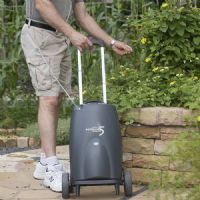 | SeQual Eclipse 5 Portable Oxygen Concentrator View Product |
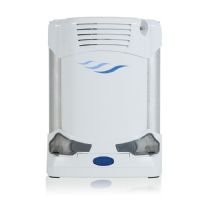 | Freestyle Comfort Portable Oxygen Concentrator with UltraSense View Product |
As one of the gases inherent in the air we breathe, oxygen is vital to human life and we would not survive without it. Comprising about 21-percent of the air, oxygen (O2) is absorbed through our lungs and transported to our cells, metabolizing to perform a variety of different functions crucial to survival.
If your doctor has prescribed oxygen therapy, also known as supplemental oxygen, or O2 therapy, you’ve probably got a lot of questions, such as how to use it safely, or how it will benefit you. Our complete guide details everything you need to know about oxygen therapy.
Stationary Home
|
Stationary Home
|
Portable (POC)
|
Portable (POC)
|
Although most people with healthy lungs are able to receive enough oxygen from the air, when lung function is impaired, the amount of oxygen obtained through normal breathing may be insufficient. Oxygen therapy is a medical treatment requiring a prescription from a healthcare professional, providing varying dosages and delivery methods of supplemental oxygen. It helps people with low oxygen levels and compromised respiratory systems to get the oxygen they need to survive and thrive.
Many medical conditions can be improved with the use of oxygen therapy. As referenced by the American Lung Association, supplemental oxygen has repeatedly demonstrated to improve stamina, mental alertness, mood, and sleep, and supports people in participating with normal, everyday functions. Oxygen therapy is most often used for people living with the following conditions:
Supplemental oxygen is regarded as a drug, with specific physiologic and biochemical actions and a distinct range of effective doses. Because it also has well-defined adverse effects at high doses or when it’s used inappropriately, it must be prescribed by a healthcare professional for the safe and effective administration of oxygen therapy.
If you need supplemental oxygen, it’s probable that you won’t notice this deficiency yourself. Your doctor typically realizes your need for oxygen therapy after running specific tests. Normal blood oxygen levels are generally around 95-percent or above, and oxygen therapy strives to bring that level to 88-percent or above.
Once your blood oxygen level is ascertained by your doctor, an oxygen therapy treatment plan will be tailored specifically for your unique requirements. Some people will only need supplemental oxygen at certain times, such as at night for sleep, while others’ needs may be more involved and require oxygen therapy 24/7. Your doctor will also determine the specific flow rate and concentration of oxygen you receive.
Your doctor establishes your blood oxygen level through the use of a pulse oximeter or ABG (arterial blood gas) test. Pulse oximeters are non-invasive and placed on the finger, toe, or earlobe to measure the levels of oxygen in the blood and detect hypoxemia, along with providing the patient’s pulse rate. ABG tests are more invasive and utilized when more intensive information is required. This test involves drawing blood from an artery in the wrist in order to measure oxygen levels.
If you’ve started a doctor-prescribed regimen of oxygen therapy, you should never change the dosage or stop its use on your own. Always discuss possible therapy changes with the medical professional prescribing your care, as there can be serious health risks involved. Aside from their clinical use, pulse oximeters can also be used at home or on the go for oxygen therapy patients to help keep better track of their oxygen levels throughout the day and night.
The main types of oxygen therapy delivery systems include compressed oxygen tanks, liquid oxygen, stationary oxygen concentrators, and portable oxygen concentrators, along with more specialized devices, such as continuous positive airway pressure (CPAP) and bilevel positive airway pressure (BiPAP) machines, and hyperbaric oxygen therapy chambers (HBOT).
Determining the best oxygen therapy that is right for you is based on how much oxygen you will need, lifestyle, and how/when you need supplemental oxygen, and affordability and/or insurance coverage. Depending on specific needs, your doctor may prescribe a delivery system for home use along with a portable device for your oxygen needs away from home.
As one of the most common, affordable, and familiar oxygen delivery modalities, compressed oxygen in a metal tank, cylinder, or canister provides oxygen to the patient through a nasal cannula worn on the face. It attaches to the canister via tubing, directly connecting to the outflow valve, or through a humidifier, which helps to prevent nasal cavities from getting too dry.
Using a gauging apparatus with an oxygen conserver or regulator that’s attached to the canister to control the rate of oxygen flow, this rate is assessed by your doctor and will determine the size of the tank you need. Some compressed oxygen tanks will require returns to the supplier for refills, while other more portable systems are refillable by the patient. Home-fill systems enable patients to fill their tanks with an oxygen concentrator.
Compressed oxygen delivery systems are most often used at home, but smaller canisters can be made portable to take along for excursions outside the home.
This type of oxygen delivery system is similar to the compressed gas method with attached tubing and nasal cannula but is compressed and cooled to an extreme freezing temperature. Usually consisting of a stationary reservoir storage unit combined with a portable component, most liquid oxygen systems don’t require electricity to operate, as they provide high concentration oxygen.
Oxygen concentrators draw in air from the surroundings, remove nitrogen and other gases, and deliver purified oxygen to the patient via a nasal cannula and tubing. They provide oxygen at a steady, continuous rate, which can be adjusted. Stationary oxygen concentrators require electricity to operate, and while they’re movable from room to room, they are usually quite a bit larger than portable oxygen concentrators, making them a good choice for home use. For more information on oxygen concentrators check out our article The 5 Best Oxygen Concentrators.
Like stationary oxygen concentrators, portable oxygen concentrators (POCs) also utilize the surrounding air, purifying it to deliver oxygen to the patient. But they are much smaller and easier to take along wherever you go to ensure you always have supplemental oxygen when you need it.
Powered with rechargeable batteries or by plugging into an outlet, POC design has come a long way in recent years, with a significantly smaller, compact format and more efficient oxygen delivery. Portable oxygen concentrators offer continuous flow, pulse flow, or both. Continuous flow POCs provide oxygen at a steady rate, while pulse flow POCs provide oxygen in bursts or pulses every time you inhale. If you are looking to see what portable oxygen concentrator is best for you, check out our article Top 4 Portable Travel Oxygen Devices to help your search.
Continuous positive airway pressure (CPAP) and bilevel positive airway pressure (BiPAP) machines are specifically designed to provide oxygen and normalize breathing patterns during sleep. Often recommended for sleep apnea, patients wear a specially configured mask over the nose and/or nose and mouth that’s connected to the machine. It delivers a steady stream of air to keep the airway open, helping oxygen levels to remain constant throughout the night. For more information and help choosing the best CPAP machine read our article, 5 Best CPAP Masks of 2019: Our Top-Rated Masks Ranked.
Hyperbaric oxygen therapy (HBOT) chambers deliver oxygen at greater than normal atmospheric pressures to treat a wide variety of medical conditions. Hard-side chambers deliver a higher rate of oxygen absorption by the bloodstream and are most often used in clinical settings, while soft-side chambers or mild chambers are used in wellness centers or at home. For a complete guide about hyperbaric oxygen therapy look at our article, The Ultimate Guide to Hyperbaric Oxygen Therapy.
The use of an oxygen concentrator in conjunction with a hyperbaric chamber is highly encouraged. When it’s combined with the pressure increase inside the chamber, the rate of oxygen absorption increases in the patient’s bloodstream, multiplying the beneficial effects of HBOT therapy.
Choosing the best oxygen therapy delivery system is established by analyzing several factors along with professional medical input from your doctor. When you’re trying to decide what equipment is right for you, the two most important questions to determine are what type of oxygen device to use (compressed oxygen cylinders, liquid tanks, or oxygen concentrators), and what type of delivery system (nasal cannula, tubing, and face masks). The factors that influence this decision include:
Supported flow and concentration rate - Your doctor will prescribe a specific liters-per-minute (LPM) flow rate and oxygen concentration level, which you must ensure your oxygen equipment supports. There will most likely be varying flow rates prescribed for the changing oxygen requirements, with different LPMs for sitting/resting, activity/exercise, and sleep.
Portability - If you require oxygen therapy away from home, or if you travel frequently, it’s important to choose oxygen therapy equipment you can take with you.
Refills and replacements - Choosing oxygen canisters for therapy may require dropping them off at an oxygen refill company, and/or getting replacement tanks from a home healthcare service. Home-fill systems require the use of an oxygen concentrator in addition to the tank system, to fill up the canisters.
Oxygen capacity - It’s important that you never run out of oxygen, especially if it’s prescribed 24/7. Because your supplemental oxygen should always be available to you, it’s crucial to determine your usage needs both at home and while traveling or running errands to ensure the equipment you choose can meet those needs. Many oxygen therapy patients will use tanks or a stationary concentrator at home and have a portable oxygen concentrator for times they’re away from home.
Comfort - If the oxygen therapy equipment you select is too big or unwieldy for you to handle and move around with, or if nasal cannulas and face masks cause discomfort, you will be less inclined to comply with your therapy, resulting in negative health consequences. Use humidifiers to moisten the oxygenated air from any oxygen delivery system, and keep any physical limitations in mind so you can choose the equipment you’ll be able to operate and use comfortably.
Discretion and Aesthetics - If it’s important to you that your oxygen equipment fits in with the decor of your house, there are many systems available specially designed to match and blend in with the environment. Smaller portable oxygen concentrators are often wearable, with an attractive carrying bag that disguises this medical equipment.
Sound level - The sounds that oxygen therapy equipment makes can also factor in how discreet the use will be. While using compressed or liquid oxygen is generally quiet, both stationary and portable oxygen concentrators can vary greatly on their sound level output. If you’re looking for the quietest option, be sure to check each device’s decibel (dB) range.
Cost - Oxygen therapy equipment varies widely in price points, with compressed or liquid oxygen generally being the most affordable, especially when insurance won’t cover it. Be sure to check with your medical insurance billing to see if they will at least partly cover any oxygen therapy equipment, along with talking to your doctor about possible support. Oxygen concentrators will have a higher price than compressed gas canisters, but will often be the better option in the long run for people requiring higher amounts of oxygen. Portable oxygen concentrators tend to cost the most but offer the most versatile and convenient use, especially for patients requiring less oxygen.
When you have been prescribed supplement oxygen and you’re trying to figure out what’s best for you, the whole process can be overwhelming - in part because of all the different equipment, accessories, and maintenance of the system, along with the logistics of keeping it all managed. Learning more about the different delivery systems and how they work will help you to make the best choice to fit your unique needs.
Constructed of thick metal to safely contain the highly pressurized oxygen, compressed gas cylinders or tanks have long been the standard option for supplemental oxygen therapy. Simple and inexpensive, they come in a variety of sizes to accommodate use both inside and outside of the home but are mostly used for home use.
Easy to operate, they start to release oxygen with a simple turn of a key and close the valve the same way. Because they are highly flammable, oxygen tanks must be handled with care, keeping them stored upright and away from anything that can spark or ignite, or is highly flammable itself. To safely store or transport gas cylinders an oxygen rack or an oxygen cart is highly recommended. Keep in mind that the canisters will need to be replaced or refilled as they become depleted. If you need more help deciding between an oxygen tank or a concentrator, read our article Oxygen Tanks vs Oxygen Concentrators: 5 Tips to Help You Choose.
Similar in configuration to compressed oxygen tanks, the canisters are filled with liquid oxygen rather than compressed oxygen gas. Because it’s in this denser format, these tanks can hold much more oxygen and can also be stored at a lower pressure, resulting in lower volatility, reducing the risk of explosive flammability. Liquid oxygen tanks will need to be refilled, but unlike compressed gas tanks, liquid oxygen can be supplied from a large reservoir that’s stored in your home.
Pulling in regular, ambient air and then purifying it to create concentrated, breathable oxygen, stationary oxygen concentrators provide a great alternative to large canisters and reservoirs for home oxygen use. Also known as home oxygen concentrators, they can deliver up to 95-percent oxygen and up to 10 LPM flow rates.
Exceptionally convenient, as long as they’re plugged into a power source, they never run out of oxygen. Designs have been aesthetically updated in recent years, becoming more sleek and stylish, and lighter in weight, enabling them to be moved from one room to another as needs dictate. They’re also quite safe and lot less flammable, and won’t accidentally leak oxygen into your home when they’re not in use, nor will they explode.
Just like home oxygen concentrators, portable versions also use air from the surrounding environment, purifying it to deliver concentrated oxygen to the patient. The main difference between the two types is that portable oxygen concentrators (POCs) are much smaller and can operate with battery power instead of just electricity. They also offer pulse flow, continuous flow, or a combination of both to provide exacting therapy for every individual need.
Today’s advances in technology have revolutionized the portable oxygen concentrator’s basic design, resulting in smaller, lightweight devices that are wearable, discreet, and operate with whisper-quiet efficiency. Innovative updates to this equipment now allow it to last longer between battery charges, and/or charge batteries within the device as it’s operating, ensuring uninterrupted oxygen therapy you can always rely on.
How long you survive while using oxygen therapy is dependent upon several factors, including age, activity levels, diet, lifestyle, exercise levels, and cardiopulmonary function. Supplemental oxygen therapy is a medication that assists in extending lives, helping to increase respiratory function and elevate blood oxygen levels for a better quality of life.
While oxygen therapy is definitely used to help mitigate breathlessness and shortness of breath symptoms, not everyone is a candidate for oxygen therapy to help resolve these types of issues, so be sure to talk to your doctor about what’s best for you.
Continuous oxygen therapy usually refers to the continuous flow aspect of various oxygen delivery systems, as opposed to pulse dose oxygen delivery. Continuous flow delivers oxygen at a steady, constant rate, no matter how slow, fast, deep, or shallow the patient is breathing. Pulse dose delivers bursts of oxygen in congruence with the patient’s breathing pattern, customizing its delivery with each inhalation.
Petroleum-based products placed in the nose or on the face (ointments, lip balm, lotion) are contraindicated for use during oxygen therapy because oxygen can cause an adverse reaction with these substances, resulting in severe burns. Other safe oxygen use tips include not smoking or having any other sparks/open flames around the equipment, not storing the oxygen in closets or vehicles, using well-ventilated areas, and keeping the tanks upright and secured so they can’t fall.
Medical oxygen in tanks does not typically expire unless it’s been contaminated and remains safe and stable to use for years. Other equipment parts may need to be replaced as time and use dictate.
If you meet all of the conditions, Medicare Part B will cover 80-percent of the rental of oxygen equipment and accessories as DME (durable medical equipment) that your doctor prescribes for use in your home.
Because of the recent advances with technology and innovation in the medical field, more patients requiring supplemental oxygen are choosing oxygen concentrators for their therapy requirements than ever before. We’ll help you compare the best choices available for both stationary (home) oxygen concentrators and portable oxygen concentrators so you can more easily determine the right delivery system for you.
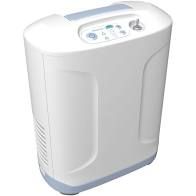 |
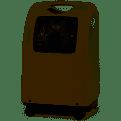 |
|
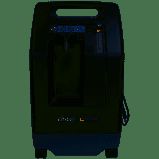 |
|
|
Liters per minute (LPM) |
1 - 5 LPM |
0.5 - 5 LPM |
1 - 5 LPM |
1 - 5 LPM |
|
Delivery method |
Continuous |
Continuous |
Continuous |
Continuous |
|
Recommended for |
Home and Travel |
Home use |
Home use |
Home use |
|
Oxygen purity |
90% (+6%/-3%) |
95.6% to 87% at all flow rates |
(at 5 LPM) 90% (+/- 3%) |
(at 5 LPM) 93% (+/- 3%) |
|
Oxygen sensor |
No |
Yes |
Yes |
Yes |
|
Weight |
18 lbs |
39 lbs |
54 lbs |
36 lbs |
|
Dimensions |
16"H x 13"W x 7"D |
13"W x 23"H x 11.5"D |
28.5" H, 15.7" W, 14.5" D |
24.5" H, 13.5" W, 12" D |
|
Noise level |
<50dB |
<43dB |
48dB typical |
48dB typical |
|
Power |
275 watts |
325 watts |
350 watts |
310 watts |
|
Maximum outlet pressure |
- |
5 PSI (+/- 0.5 PSI) |
7-9 PSI |
8.5 PSI |
|
Electrical |
110 to240 VAC, 50/60 Hz |
120 VAC (+/- 10%), 60 Hz |
120 VAC (+/- 10%) |
115 VAC |
|
Warranty |
3 years |
3 years/ limited |
3 years |
3 years |
| |
|
|
|
|
Liters per minute (LPM) |
2 - 10 LPM |
2 - 10 LPM |
2 - 10 LPM |
|
Delivery method |
Continuous |
Continuous |
Continuous |
|
Recommended for |
Home use |
Home use |
Home use |
|
Oxygen purity |
87 - 96% |
87 - 96% |
89 - 95% @ 2-9 LPM |
|
Oxygen sensor |
Yes |
Yes |
Option |
|
Weight |
42 lbs |
42 lbs |
54 lbs |
|
Dimensions |
24.5"H x 13.5"W x 12"D |
24.5"H x 13.5"W x 12"D |
27.5"H x 16.5"W x 14.5"D |
|
Noise level |
<59dB |
- |
52 dB |
|
Power |
639 watts |
639 watts |
590 watts |
|
Maximum outlet pressure |
20.0 PSI ± 1.0 PSI |
9 +/- 0.5 PSI |
20 PSI |
|
Electrical |
120VAC, 60Hz; 639W (avg) |
120VAC, 60Hz; 639W (avg) |
120V/60Hz (±10%) |
|
Warranty |
3 years |
3 years |
3 years |
| |
|
|
|
|
|
Pulse-type |
Minute Vol. Delivery: Dose decreases as rate rises |
Minute Vol. Delivery: Dose decreases as rate rises |
Minute Vol. Delivery: Dose decreases as rate rises |
Minute Vol. Delivery: Dose decreases as rate rises |
|
Settings |
1 - 5 |
1 - 3 |
1 - 3 |
0.5-3 |
|
Dose per breath |
20 BPM |
15 BMP: 33mL, 30 BPM: 16mL |
630 ml/minute |
12 BMP |
|
Weight |
5 pounds; add 2 to 5 pounds with accessories |
4.8 lbs with one battery |
2.8 pounds; add 2 to 5 pounds with accessories |
18.4 pounds with battery |
|
Battery duration (on 2nd setting) |
3.5 hours |
4 hours with one battery (On a Setting of 1 LPM) |
2 hours 40 minutes, (4 cell), 5 hours (8 cell) |
5 hours |
|
Charge time |
3 hours |
2 hours and 18 minutes |
3 hours (4 cell), 6 hours (8 cell) |
1.8-5 hours |
|
Noise level |
41 dBa |
40dB |
40dB |
44dBA |
|
FAA approved |
Yes |
Yes |
Yes |
Yes |
|
Warranty |
5 years on unit |
3 years on unit |
3 years on unit |
3 years on unit |
| |
|
|
|
|
O2 Concepts OxLife Independence Portable Oxygen Concentrator |
|||
|
Pulse-type |
Fixed Delivery: 16mL per setting |
Fixed Delivery: 16mL per setting |
Variable Delivery (Intelligent Delivery) |
|
Settings |
Pulse: 0.5 to 6, Continuous: 0.5 to 3 |
Pulse: 1 to 6, Continuous: 1 to 3 |
Pulse: 1 to 6 |
|
Dose per breath |
20 BPM |
20 BPM |
15-40 BPM |
|
Weight |
16 pounds; add 5 to 10 pounds with accessories |
19 pounds; add 5 to 10 pounds with accessories |
4.7 pounds |
|
Battery duration (at 2nd setting) |
5.75 hours |
4.5 hours |
6.5 hours (single battery), up to 13 hours (double battery) |
|
Charge time |
1.5 hours |
3 hours |
3 hours |
|
Noise level |
40dB |
40dB |
38 dBA |
|
FAA approved |
Yes |
Yes |
Yes |
|
Warranty |
5 years on unit |
3 years on unit |
3 years on unit |
Oxygen therapy is used for people who aren’t able to get enough oxygen from the air, helping not only to prolong their life but also to provide a better quality of life. Supplemental oxygen is prescribed by a healthcare professional, and delivery systems include compressed oxygen cylinders, liquid oxygen tanks, stationary oxygen concentrators, and portable oxygen concentrators. We’ve covered all the important information you need to know when you’re prescribed oxygen therapy in order to help you make the best decisions for your own health requirements. Knowing more about specific oxygen delivery systems, their features, and how they compare to each other will help you establish the right oxygen equipment to match your lifestyle and improve your health. To learn more, we invite you to read our articles at Caregiver University about the best oxygen regulators, and our CPAP comparison article.

Megan has been a part of Rehabmart since its inception nearly 20 years ago. For the past several years she has been enjoying her role as HR Director while maintaining her Physical Therapy license. When she isn't working on her next in-service or working to find a new team member, she enjoys her five children, helping those who have PT type ailments, baking, practicing yoga, and working out.